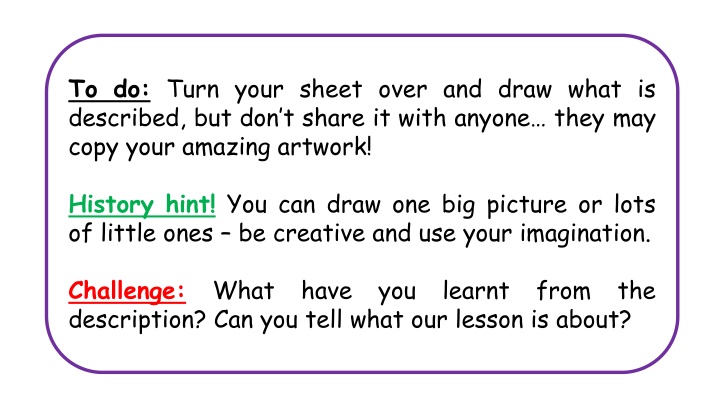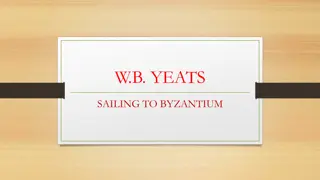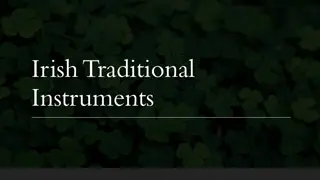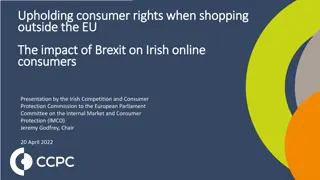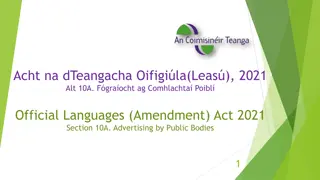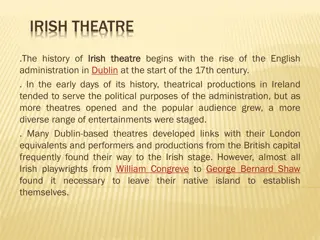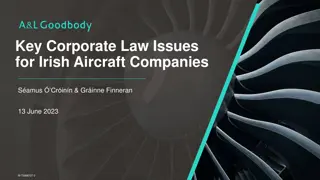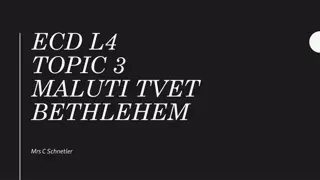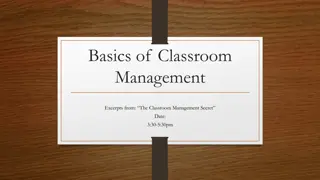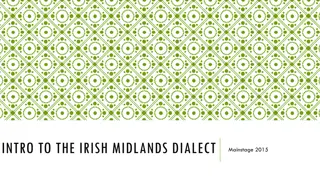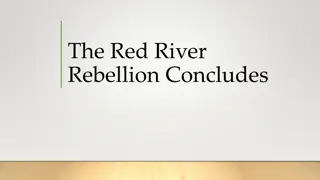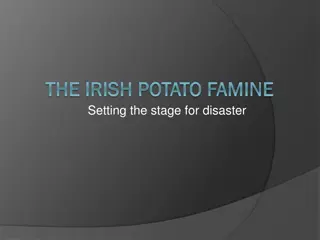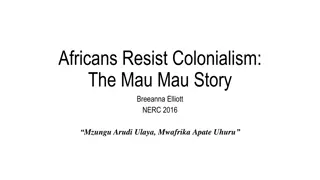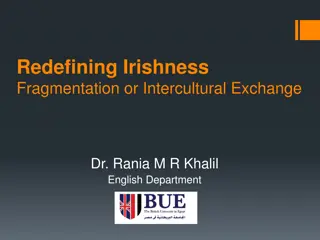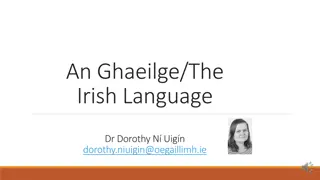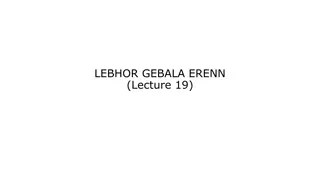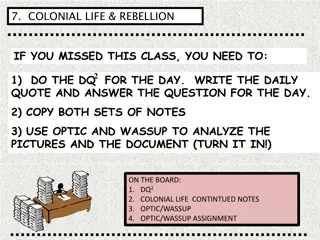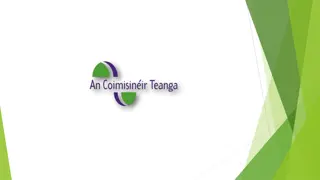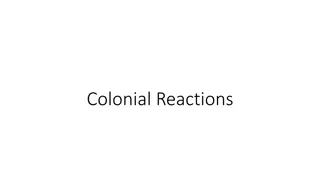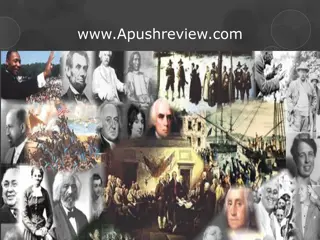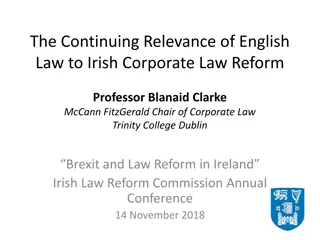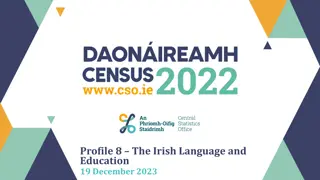1798 Irish Rebellion through Creative Classroom Activities
Dive into the events of the 1798 Irish Rebellion through engaging classroom activities such as drawing historical scenes, reading stories, answering questions, and interacting with classmates. Uncover different perspectives, key figures, movements for reform, and the challenges faced during this significant period in Irish history.
Download Presentation

Please find below an Image/Link to download the presentation.
The content on the website is provided AS IS for your information and personal use only. It may not be sold, licensed, or shared on other websites without obtaining consent from the author.If you encounter any issues during the download, it is possible that the publisher has removed the file from their server.
You are allowed to download the files provided on this website for personal or commercial use, subject to the condition that they are used lawfully. All files are the property of their respective owners.
The content on the website is provided AS IS for your information and personal use only. It may not be sold, licensed, or shared on other websites without obtaining consent from the author.
E N D
Presentation Transcript
To do: Turn your sheet over and draw what is described, but don t share it with anyone they may copy your amazing artwork! History hint! You can draw one big picture or lots of little ones be creative and use your imagination. Challenge: What have you learnt from the description? Can you tell what our lesson is about?
Review! What did you draw? What is it supposed to be about? Is everyone s drawing the same? Why do you think this is?
How far do the two views that we have looked at represent the events of 1798? Objectives: Identify two different views of 1798. Explain the events leading to and during the 1798 Rebellion. Judge how far the two views represent the events they describe.
To do: You are going to read a story as a class. The person who has the card with start on it will go first. You know it is your turn when someone reads the bit in red on the left-hand side of your domino! History hint! Some members of the class have been given the full story; it is their job to put you back on track if someone gets lost.
To do: You now need to use your domino card to answer as many questions on your sheet as you can. Once you have written the answer down, sign your name in the box. History hint! Some dominoes will answer one question, others may answer two and some may answer none, so look carefully!
To do: Now you must go around the room and ask your fellow classmates to help you answer the rest of the questions. Every time they give you an answer, get them to sign their name. History hint! First to have all the correct answers wins! Challenge: Write a 50-word summary of the Irish Rebellion using the facts that you have found out.
How did you do? 1. 2. Protestants 3. Poor people 4. Vote or become an MP 5. London (Britain) 6. French Revolution 7. Liberty, equality and brotherhood 8. United Irishmen 9. Theobald Wolfe Tone, Thomas Russell, Henry Joy McCracken and William Drennan 10. Reform of the Irish parliament and link Catholics and Protestants 11. Wolfe Tone 12. Bad weather 13. Used spies and informers Certain religious groups and the poor were not treated fairly
How did you do? 14. Leaders of the United Irishmen in prison 15. Mail coaches leaving Dublin were seized 16. The government 17. Wexford 18. The government s campaign of terror 19. Father Murphy of Boolavogue 20. The fall of Wexford and Vinegar Hill 21. Rebels defeated by General Lake and 20,000 men 22. Loyalists 23. Rebels were captured and murdered (Father Murphy) 24. 8 September, 600 soldiers and 25,000 rebels killed
Review: Now you have a better idea of the events surrounding the 1798 Irish Rebellion, look at the two original viewpoints again Highlight facts in one colour. Highlight opinion in another colour. Highlight disagreements in another colour. Big question: How far do the two views that we have looked at represent the events of 1798?
How far do the two views that we have looked at represent the events of 1798? Objectives: Identify two different views of 1798. Explain the events leading to and during the 1798 Rebellion. Judge how far the two views represent the events they describe.
Recap: Give me five! 1. Who? The United Irishmen 2. What? Rebellion 3. When? 23rd May - 8th September 1798 4. Where? Ireland 5. Why? To win reform of the Irish Parliament and later, independence
To what extent were events in Ireland influenced by events abroad? Objectives: Recap basic details of 1798. Analyse the impact of other revolutions on Ireland. Judge to what extent events in Ireland were influenced by events abroad.
To do: In pairs, use the information you have been given about the country you are representing to answer the questions on your sheet. History hint! Make sure you look at the information carefully and use the questions to guide you you will be the experts in the next task. Challenge: In 100 words or less, sum up the importance of events in your country on the Rebellion in Ireland.
Review: Find a pair that has covered a different country and ask them the questions on your sheet. History hint! You have to talk to them; you can t just copy their work because the questions are different they have to use what they have learnt to help you answer them. Challenge: Now you have heard about another country, do you think your country is more or less important? Explain fully.
Big question: To what extent were events in Ireland influenced by events abroad? One way in which the events in Ireland were influenced by events abroad is Another example of Ireland being influenced is History hint! Fully explain your points, giving evidence to support them. Challenge: Which of our views from last lesson would this evidence support and why?
To what extent were events in Ireland influenced by events abroad? Objectives: Recap basic details of 1798. Analyse the impact of other revolutions on Ireland. Judge to what extent events in Ireland were influenced by events abroad.
What is in a picture? In pairs Person A will have an image that they need to describe to their partner. Person B will have to draw what they hear!
https://commons.wikimedia.org/wiki/File:United_Irishmen_upon_duty_by_James_Gillray.jpg?uselang=en-gb [Accessed 1/8/18] What did you come up with? Did you miss anything important ? What does it show about the events of 1798? Who do you think created it and why?
What can cartoons tell us about the events of 1798? Objectives: Describe what the sources show. Analyse their nature, purpose and origin. Evaluate what they show about the original interpretations.
To do: Complete your inference grid on the new cartoon, thinking about the prompts on your sheet. History hint! Start with what you can see first, and work your way out. Challenge: How do the two cartoons compare? (Think about what they show and their overall message.)
Review: Read through each piece of information in the table and decide whether it makes the view given by the cartoons more or less reliable. History hint! Some pieces of information could do both. Start from the top and work your way down; it gets harder as you go on! Challenge: What would a historian need to look at next to get a better view of the events of 1798?
Big question: To what extent are the cartoons we have looked at a useful representation of the events of 1798? One way in which the cartoons are useful is However, the cartoons History hint! Fully explain your points, giving evidence to support them. Remember, all sources are useful. Challenge: Which of our views from the first lesson would this evidence support and why?
What can cartoons tell us about the events of 1798? Objectives: Describe what the sources show. Analyse their nature, purpose and origin. Evaluate what they show about the original interpretations.
What can songs tell us about the events of 1798? Objectives: Describe what the sources show. Analyse their nature, purpose and origin. Evaluate what they show about the original interpretations.
To Do: What is in a song? 1. 2. Now read through them again and try to answer the questions on your sheet. Read through your lyrics as you listen. https://www.youtube.com/watch?time_continue=213& v=xeSW-bKMuu8 History hint! Look back at the work you did on the events of the Rebellion. Challenge: Why might someone write this 44 years after the Rebellion?
What did you come up with? What does it show about the events of 1798? Review: Let s go through the questions and see what ideas you came up with. Who do you think created it and why?
To Do: What is in a song? 1. 2. Now read through them again and try and answer the questions on your sheet. Read through your lyrics as you listen. https://www.youtube.com/watch?time_continue=7&v= ATucV4Ugqsw History hint! Look back at the work you did on the events of the rebellion. Challenge: Why might someone write this 100 years after the rebellion?
What did you come up with? What does it show about the events of 1798? Review: Let s go through the questions and see what ideas you came up with. Who do you think created it and why?
To do: Read through each piece of information in the table and decide whether it would weaken or strengthen the view or message given by the songs. History hint! Some pieces of information could do both or neither. Start from the top and work your way down; it gets harder as you go on! Challenge: What would a historian need to look at next to get a better view of the events of 1798?
Big question: To what extent are the songs we have looked at a useful representation of the events of 1798? One way in which the songs are useful is However, the songs History hint! Fully explain your points, giving evidence to support them. Challenge: Which of the interpretations from the first lesson would this evidence support and why?
What can songs tell us about the events of 1798? Objectives: Describe what the sources show. Analyse their nature, purpose and origin. Evaluate what they show about the original interpretations.
Who was Wolfe Tone? 'To break the connection with England, the never failing source of all our political evils, and to assert the independence of my country these were my objects. To unite the whole people of Ireland, and to substitute the common name of Irishman, in the place of the denominations of Protestant, Catholic, Dissenter these were my means. What were his views leading to 1798? and Why might Tone be a controversial figure? Wolfe Tone, September 1791
What can attitudes towards Wolfe Tone tell us about the history of 1798? Objectives: Analyse the aims of Wolfe Tone. Evaluate his life and attitudes towards him. Judge what attitudes towards Tone can tell us about the history of 1798.
To do: On your sheet, you have different interpretations of Tone and the events of 1798. 1. Answer the questions in the thought bubbles. 2. Read through the information and colour-code it according to which interpretation it supports. History hint: Not all of the information should be highlighted; you need to select specific points. Challenge: If Tone s aims were clear, why is he such a contested figure?
Review: Hang each interpretation about Tone on the washing line according to how accurate you think they are, and be prepared to explain your judgement. History hint! Use some of the evidence you have just looked at to help support your judgement. Challenge: How else could the interpretations be sorted? Is this a useful way of doing it?
Big question: What can the attitudes towards Wolfe Tone tell us about the history of 1798? Think! Pair! Share! History hint! Think about how history is made and the work we have done on interpretations. Is it a simple case of finding the evidence and writing it up? Challenge: Which of our views from the first lesson would this evidence support and why?
What can attitudes towards Wolfe Tone tell us about the history of 1798? Objectives: Analyse the aims of Wolfe Tone. Evaluate his life and attitudes towards him. Judge what attitudes towards Tone can tell us about the history of 1798.
How convincing are the two interpretations in relation to the events of 1798? Objectives: Recap the interpretations studied. Analyse evidence to support or challenge the interpretations. Judge how convincing the interpretations are.
Review: Look at the following interpretations again what are they arguing about the Rebellion? History hint! You have looked at the interpretations before, so you are just looking for key points to recap.
Interpretation One: Catholics in Ireland were treated badly; they couldn t vote or become a Member of Parliament and they had very few rights so they were not very happy. They heard about the French Revolution and thought they could do the same in Ireland to try to get a better deal. A group known as the United Irishmen was set up to try to include everyone in the protest, and they decided to rebel in 1798. Thanks to heroic leaders like Father Murphy of Boolavogue, the rebels had some successes; however, they were surrounded at Vinegar Hill and slaughtered. Ultimately, the rebellion failed.
Interpretation Two: Protestants in Ireland were the most powerful group and they, along with the British government, were in control of Ireland to make sure that it was run properly. They were happy with how things were and didn t want change. France had a revolution and influenced some Catholic rebels in Ireland to rise up against the government. They resented not being as powerful as the Protestants and were trying to cause trouble. Ireland wasn t united in the Rebellion; it was just a Catholic plot against Protestants. This was shown when they massacred Protestants by stabbing them to death with their pikes on Wexford Bridge. They were Catholic savages without any real aims, and they failed.
To Do: In pairs, use your table to recap some of the evidence you have looked at in your lessons on the Irish Rebellion. History hint! You need key points, and not everything you know about each piece of evidence. Do they support or challenge each interpretation? Challenge: What other sources may have been useful for studying the Irish Rebellion?
Review: Class discussion! Interpretation One: Poorly treated Catholics in Ireland rebelled; their heroic leaders, inspired by the French Revolution; had some successes but ultimately failed to win freedom. You must decide whether to A Agree with the interpretation and give evidence to support. B Build on the interpretation by giving extra detail. C Challenge the interpreatation and give evidence to contradict it. You then need to pick someone else to continue the debate. History hint! Use your tables from the previous task to help.
Review: Class discussion! Interpretation Two: Catholics rebelled, as they resented British rule and the power of the Protestants. It wasn t a united rebellion; the Catholics were savages without any real aims. You must decide whether to A Agree with the interpretation and give evidence to support. B Build on the interpretation by giving extra detail. C Challenge the interpretation and give evidence to contradict it. You then need to pick someone else to continue the debate. History hint! Use your tables from the previous task to help.
Assessment question: How convincing are the two interpretations in relation to the events of 1798? History hint! You challenging the interpretations based on the knowledge you gained from the sources. are supporting or
How convincing are the two interpretations in relation to the events of 1798? Objectives: Recap the interpretations studied. Analyse evidence to support or challenge the interpretations. Judge how convincing the interpretations are.
